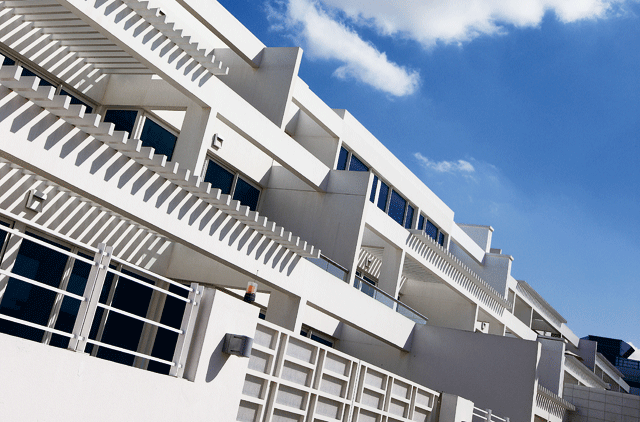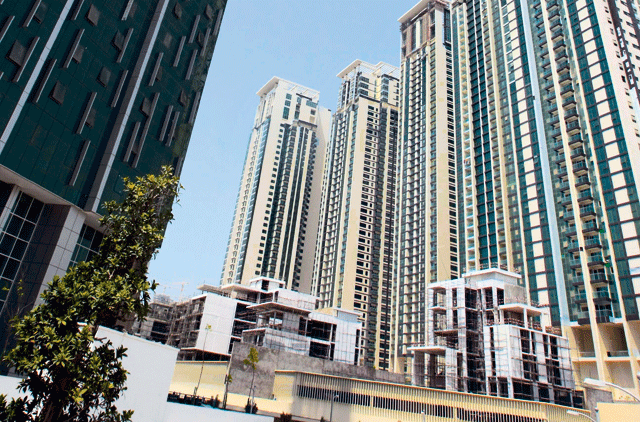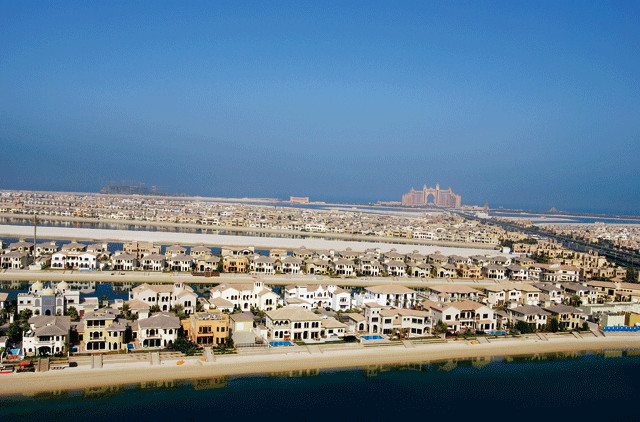
Oversupply, that dreaded watchword currently circulating among Dubai's real estate community, is finding favour with at least one key group of players in the market — the tenants. And going by the available trends, it is unlikely to lose its status any time soon.
Real estate consultants Landmark Advisory states in a Q3 report that oversupply in the Dubai real estate market won't peak until 2012. This means that tenants could continue to go on bargain hunts well into the next few years. The most noticeable impact is the relocation taking place from Sharjah, the once cost-effective destination, to Dubai's residential neighbourhoods. However, the fallout is taking on a wider scale, triggering changes in tenant migratory patterns within each emirate and from one emirate to another. For instance, the oversupply pressure, combined with a steady stream of quality new inventory, is fuelling rental declines in Abu Dhabi as well.
UAE market to reap benefits
While current tenants enjoy wide-spread choice in terms of rents and better accommodation, the obvious beneficiary could ultimately be the UAE market itself. As and when the economy picks up momentum, a realistic rental market will only help make the UAE a destination of choice. Landmark Advisory observes in an optimistic note: "Declines in residential and office rents will help make the UAE a more attractive place to live and work".
The UAE's property market, at a very basic level, relies heavily on attracting professionals from around the globe; not just to design, manage and build real estate, but to inhabit it as well. With a projected vacancy rate for Dubai between 25 and 28 per cent in two years, Dubai lease prices could decline through that period and perhaps beyond, as market conditions favour renters more and more.
As Landmark implies, corrections in the leasing market could have lasting benefits — with renters becoming ultimate beneficiaries, the changed market could lure new tenants to the UAE and will eventually only help to stabilise the market.
How the Dubai residential market fares
The latest market data conforms to the prevailing theory of contraction. Landmark shows that lease prices for Dubai villas declined by an average of 4.4 per cent, with apartments down 5.8 per cent for Q2. And yet, Jesse Downs, director of research & advisory services at Landmark Advisory, explains that yields are actually on the rise for the first time in several quarters, "Amid a strong sale price decline, the ongoing yield compression trend that has been witnessed since early 2009 reversed in Q2-10. Net villa yields increased from 4.9 per cent to 5.7 per cent, while on the other hand, apartment yields increased from 5.4 per cent to 7.4 per cent based on actual sales and rental transactions."
This development, explains Downs, is a function of the difference between two negative trends, an arithmetic that could have a positive impact on potential investors, "As prices are falling faster than rents, this is pushing up yields. This is positive for the market as higher yields are required to attract investors wary of the weak market fundamentals and perceived downside risk. At the moment, financing remains limited, which means investors continue to dictate market trends."
As the market continues to transform in favour of the tenants, it is widely expected that new inventory will pressure prices most significantly in less established developments. "Areas of significant new supply, such as master plan developments like Jumeirah Lakes Towers, Business Bay and Silicon Oasis, are likely to see further negative growth in rents as units handover and competition between landlords force rates downward," says Matthew Green, head of research & consultancy at CB Richard Ellis Middle East (CBRE). "The more established community developments are expected to maintain their premium as occupiers not so impacted by cost, choose accommodation options with more developed facilities and services," adds Green.
Further downward price movement
CBRE's Q2 report on Dubai looks at current prices compared to Q2 2008, showing that lease rates are down by an average of 33 per cent, based on sample data from eight different Dubai neighbourhoods. According to Green, prices have yet to bottom out. "The Dubai leasing market is likely to see further downward movement and growing vacancy rates over the next six to twelve months as the sheer weight of new supply extends further beyond current demand levels. A positive return to economic growth during the current year may start to slowly build sentiment towards a brighter 2011. However, at this stage, the largely anaemic GDP growth forecasted for the UAE is unlikely to signify any major return to employment and population growth in the short-term. Both of these are the key drivers of a lasting recovery in the real estate market."
In addition to the Landmark Advisory and CB Richard Ellis reports, Dubai's Real Estate Regulatory Agency's (Rera) recently updated rental index, indicates that residential rents in a cross section of Dubai neighbourhoods fell between 10 and 25 per cent in July compared to March of this year, with apartment rents in Jumeirah down 10 per cent and two-bedroom apartments in Mirdif declining more than 26 per cent.
Dynamics of Abu Dhabi residential market
While intricately linked to Dubai in many ways, Abu Dhabi's residential property market is in an entirely different situation. Matthew Green explains how Dubai's overabundant inventory affects undersupplied Abu Dhabi: "The prevailing market dynamics in Abu Dhabi are somewhat different from Dubai, with long-term undersupply of property one of the more recent concerns for residents. However, despite a lack of sufficient housing options in the capital, rental rates do continue to slide, as heightened competition from neighbouring Dubai and widespread tenant realisation of overpriced assets, continue to impact upon the market. The handover of new property at Al Reem Island, Al Reef and within satellite towns such as Khalifa City are helping to increase available options in the leasing market. Landlords are now under growing pressure to reduce rents in order to remain competitive with new supply."
As Green explains, the UAE capital's defining geographic attribute contributes to the division of the market. "One of the main emerging trends in the emirate is the growing price differential between accommodation on island and new properties on the periphery of the city. The creation of this two-tier market is providing residents with a clear location premium, and a choice between convenience and value for money. The coming year will see further decline in leasing rates, but an undersupply of specific accommodation types will mean negative growth will be very much project and location-specific, with the overall direction of the market slightly less clear than during the previous 18 months of the downturn."
According to CBRE's Q2 2010 Abu Dhabi Market View report, the price differential between on and off island properties in the capital city is between 30 and 55 per cent.
While location does enjoy a level of primacy in Abu Dhabi, Jesse Downs describes another emerging trend: quality. This is also a major concern, and one that perhaps not all new developments have addressed sufficiently. "Only 20 per cent of pipeline properties advertised as high-end will actually meet that standard, and short-term price/rent performance of medium quality deliveries will behave as though they were higher-end. However, we predict that this trend will be temporary, with performance weakening and not recovering once the truly high-end developments are delivered."
Commercial properties
Occupied or otherwise, there will be a glut of potential workspaces in both Dubai and Abu Dhabi, with office supply predicted to nearly double in the next three to four years. While growth will continue to outpace demand, an emphasis on quality could have a positive long-term effect, "New commercial properties coming online will infuse the market with higher quality office supply and drive down office rents, making both cities more attractive centres for business," says Jesse Downs. "The market now needs stimulus initiatives to leverage the improved affordability and to encourage the growth of industries that will diversify the local economies and fill the expanding vacancies projected over the next three to four years."
While the details differ, both Dubai and Abu Dhabi have experienced drops in lease prices in their commercial sectors. CBRE puts declines in Dubai at around 17 per cent this quarter and, according to their Q2 2010 Market View Abu Dhabi report, "average prime office rental rates are now around Dh2,200 per square metre per annum, a decline of 5 per cent from Q1 2010. In comparative terms, average prime rates are now at less than half the level registered during the peak of 2008."
Jones Lang La Salle, in its Abu Dhabi Real Estate Market Overview for July 2010, predicts that, "office market vacancies [will] continue to increase as new supply comes on stream and will continue until economic development initiatives boost new demand. This is providing additional choice for tenants. Rental prices continue to decrease with the gap between Grade A and Grade B rentals widening. This is unlikely to change as, in Jesse Down's view, Abu Dhabi's "office rents will continue to decline on the back of rapidly expanding office supply; in 2010 alone, there will be a 32 per cent increase in supply."
With conditions favouring tenants throughout the UAE's major markets, landlords are finding themselves at a disadvantage for the first time in several years. While prices continue downward, property owners will have to continue to make concession on fronts in order to attract tenants as competition increases.
POSITIVE VIEW
Increasing yields based on actual sales and rental transactions could attract investors wary of the weak market fundamentals and perceived downside risk
Established community developments are expected to maintain their premium as occupiers not so impacted by cost, choose accommodation options with more developed facilities and services
Realistic rental market will eventually help to make the UAE an attractive destination to live and work




